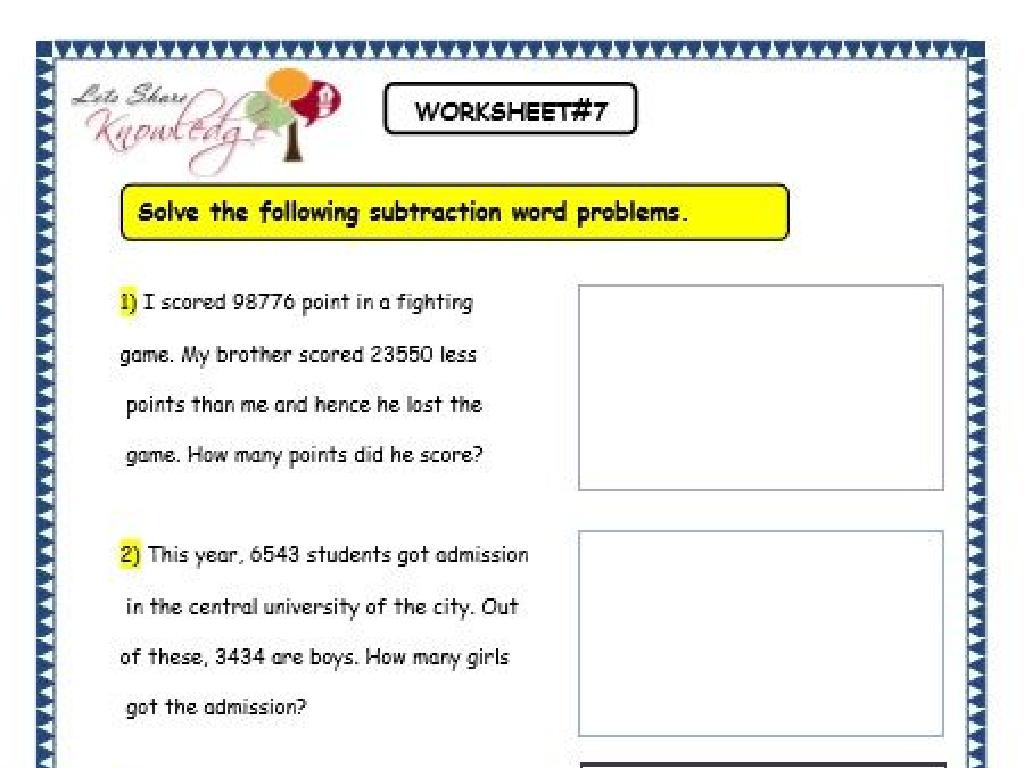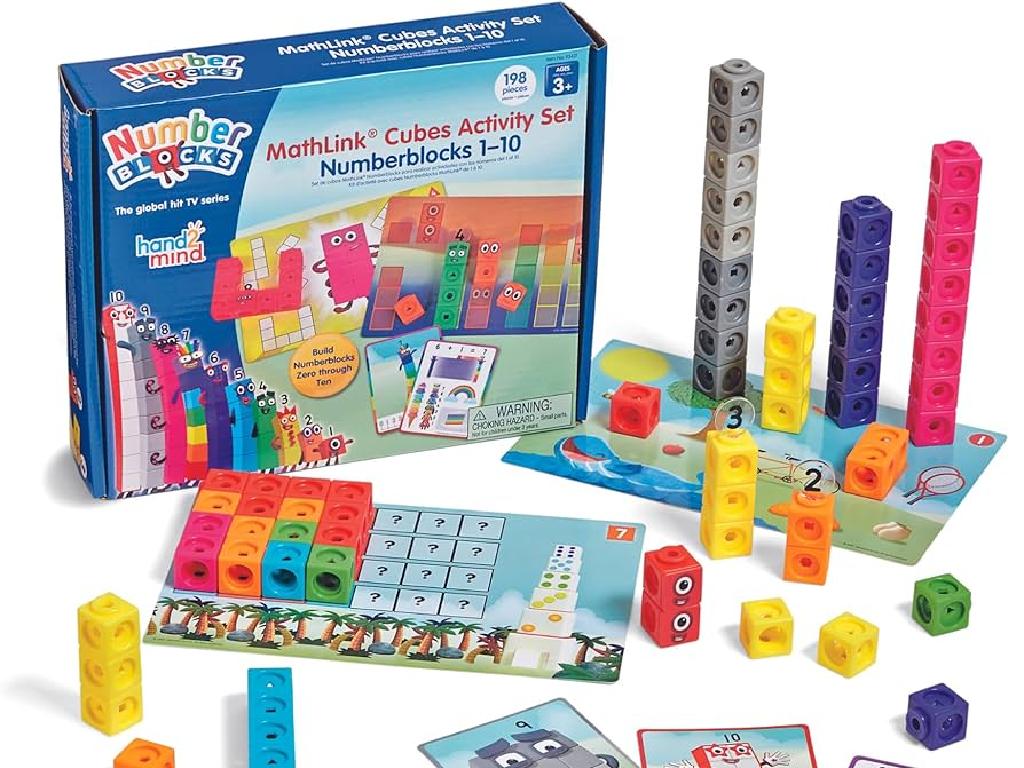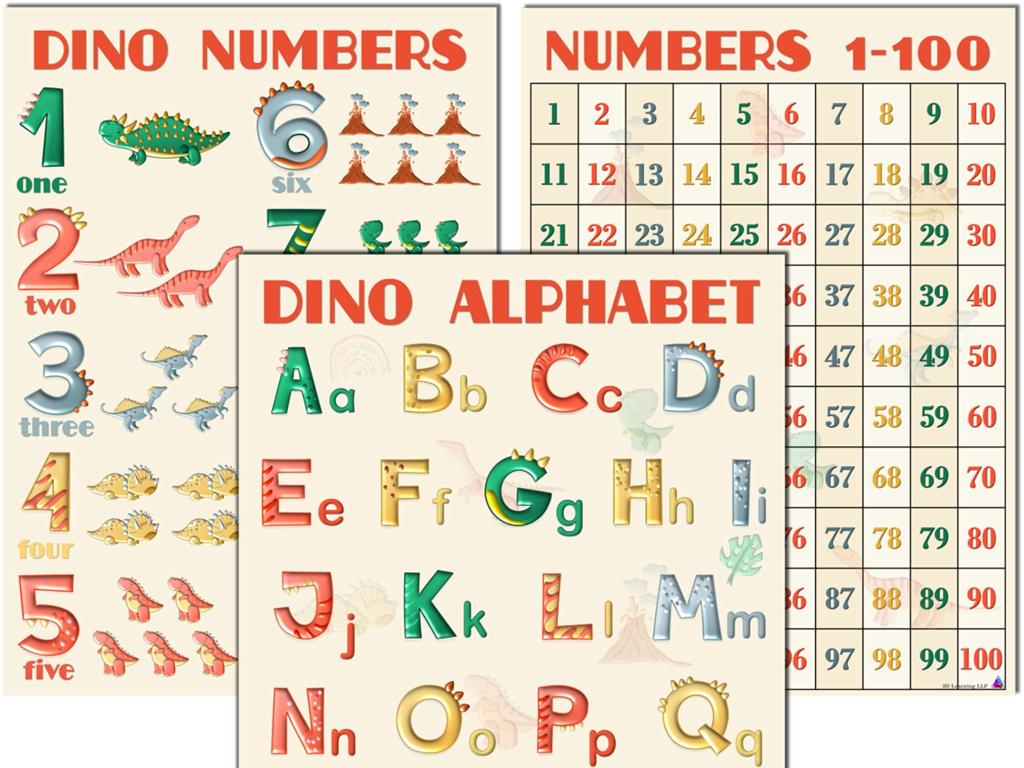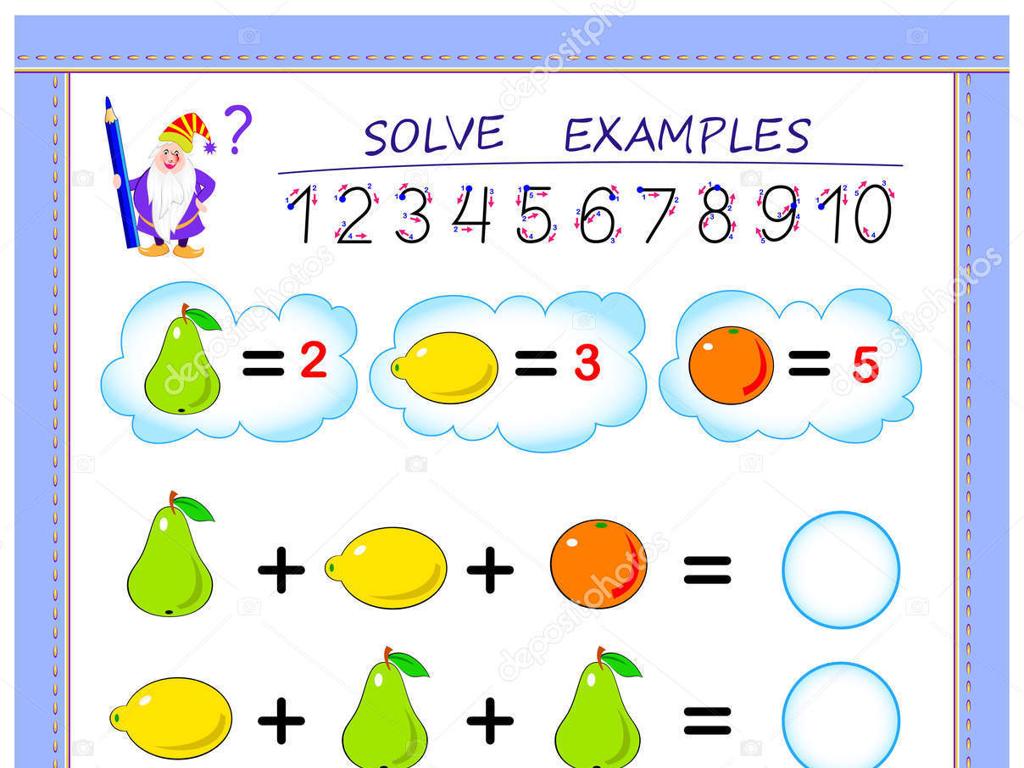Simple Interest
Subject: Math
Grade: Seventh grade
Topic: Consumer Math
Please LOG IN to download the presentation. Access is available to registered users only.
View More Content
Understanding Simple Interest
– Introduction to Consumer Math
– Definition of Simple Interest
– Interest on a loan or deposit calculated based on the original amount (principal)
– Significance of Simple Interest
– Helps in making informed financial decisions
– Real-world application
– Calculate interest on savings or loans
|
This slide introduces the concept of Simple Interest within the broader topic of Consumer Math, which is essential for understanding everyday financial transactions. Simple Interest is a quick way to calculate the interest you either owe on a loan or earn on a deposit, based solely on the original amount, not on accumulated interest. Understanding this concept is crucial for students as it lays the foundation for making smart money management choices, such as saving for the future or borrowing responsibly. Real-world applications include calculating interest on savings accounts, loans, and investments. Encourage students to think of examples where they might need to calculate simple interest in their own lives.
Understanding Simple Interest
– Define Simple Interest
– Interest earned on the original amount of money invested or loaned
– Learn the formula: I = PRT
– I is interest, P is principal, R is rate, T is time in years
– Understand Principal (P)
– Principal is the initial sum of money invested or borrowed
– Grasp Rate (R) and Time (T)
– Rate is the percent charged or earned, Time is how long the money is invested or borrowed
|
Simple interest is a fundamental concept in consumer math where interest is calculated only on the principal amount, not on accumulated interest. It’s crucial for students to understand the formula I = PRT, where ‘I’ stands for the interest earned or paid, ‘P’ is the principal amount, ‘R’ is the annual interest rate (expressed as a decimal), and ‘T’ is the time the money is invested or borrowed in years. Emphasize the importance of understanding each component of the formula and how they interact. Provide examples with different principals, rates, and time periods to illustrate how simple interest is calculated in real-life scenarios such as bank accounts and loans.
Calculating Simple Interest
– Interest on savings account
– If you save $500 at 5% interest, how much do you earn in a year?
– Total repayment on a loan
– Borrow $1000 at 10% for 1 year, what’s the total repayment?
– Simple Interest formula
– Use formula I = PRT (Interest = Principal x Rate x Time)
– Class practice problem
– We’ll solve an example together in class!
|
This slide introduces the concept of simple interest in financial contexts that are relevant to students. Start by explaining how interest on savings accounts works as a reward for keeping money in the bank. Then, discuss how interest on loans represents the cost of borrowing money. Introduce the simple interest formula I = PRT, where ‘I’ stands for interest, ‘P’ for principal amount, ‘R’ for rate of interest per year, and ‘T’ for time in years. The class practice problem will be an interactive activity where students apply the formula to a new example, reinforcing their understanding of the concept. Provide guidance and support as they work through the problem.
Real-Life Applications of Simple Interest
– Interest calculation on savings
– Banks use simple interest to grow your savings over time.
– Bank loans interest
– When borrowing, banks charge interest on the loan amount.
– Simple interest in shopping
– Layaway plans may include interest, affecting total cost.
|
This slide aims to show students how simple interest is applied in everyday financial situations. Explain that banks use simple interest to calculate the growth of savings accounts over time, which encourages saving. When taking out a loan, banks charge interest on the amount borrowed, which is an additional cost to consider. In retail, layaway plans might include simple interest, which can increase the total price of an item. Provide examples for each case, such as calculating the interest on a savings account with a given interest rate, or the total cost of a loan or layaway plan including interest. Encourage students to ask questions and think of other situations where they might encounter simple interest.
Comparing Simple and Compound Interest
– Define Compound Interest
– Interest on both initial principal and accumulated interest
– Key differences from Simple Interest
– Simple interest is calculated on principal only, while compound includes interest on interest
– Examples of each interest type
– Simple: Savings account. Compound: Investments.
– Understanding when to use each
– Simple for short-term, Compound for long-term growth
|
This slide aims to explain the concept of compound interest and how it differs from simple interest, which the students have already learned. Compound interest is the interest on a loan or deposit calculated based on both the initial principal and the accumulated interest from previous periods. It’s important to highlight that while simple interest is straightforward, compound interest can significantly increase the amount of money over time due to the ‘interest on interest’ effect. Provide real-life scenarios where each type might be encountered, such as simple interest in a standard savings account and compound interest in investments or a mortgage. Encourage students to think about the implications of these differences when saving or borrowing money.
Class Activity: Simple Interest Scenarios
– Solve bicycle savings scenario
If you save $200 at 5% interest/year, what’s the interest after 1 year?
– Calculate loan interest for school project
Borrowing $500 at 3% interest/year for a project, find the total cost after 1 year.
– Use the simple interest formula
I = PRT (Interest = Principal x Rate x Time)
– Discuss real-world applications
|
This activity is designed to help students apply the concept of simple interest to real-life situations. Provide two scenarios: one where students calculate the interest earned from savings for a bicycle, and another where they determine the interest on a loan for a school project. Encourage students to use the simple interest formula I = PRT, where ‘I’ stands for interest, ‘P’ for principal amount, ‘R’ for rate of interest per year, and ‘T’ for time in years. Have students work in pairs or small groups to solve these problems, and then share their solutions with the class. This will help them understand how simple interest affects financial decisions. Offer additional scenarios if time permits to reinforce the concept.
Review and Q&A: Simple Interest
– Recap simple interest formula
– I = PRT, where I is interest, P is principal, R is rate, T is time
– Ask your questions now
– Discuss any challenges faced
– Let’s clarify any complex parts together
– Share your simple interest examples
– Examples like bank savings or loans
|
This slide is aimed at reinforcing the students’ understanding of simple interest. Begin by recapping the formula I = PRT, where ‘I’ stands for the interest earned or paid, ‘P’ is the principal amount, ‘R’ is the rate of interest per year, and ‘T’ is the time the money is invested or borrowed for. Encourage students to ask any questions they may have regarding the concept to ensure they are clear on how to apply the formula. Address any difficulties or confusions that the students may have encountered during their practice. Lastly, ask students to share examples of simple interest they’ve come across, such as in their savings accounts or in stories about loans, to connect the concept to real-life scenarios. This interactive session will help solidify their understanding and allow for immediate feedback.
Homework: Mastering Simple Interest
– Practice calculating simple interest
– Use the formula I = PRT (Interest = Principal x Rate x Time)
– Introduction to compound interest
– Review and prepare questions
– Look over your notes and try to understand the basics
– Bring questions to next class
– Write down anything that’s confusing to ask in class
|
This homework slide is designed to reinforce the students’ understanding of simple interest through practice problems. They should use the formula I = PRT, where ‘I’ stands for interest, ‘P’ for principal amount, ‘R’ for rate of interest per year, and ‘T’ for time in years. Encourage students to try different scenarios to see how changing the variables affects the interest. Introduce them to the concept of compound interest as a teaser for the next class, and remind them to review their work and come prepared with questions. This will help them to be active learners and feel more engaged in the learning process. Provide several practice problems with varying levels of difficulty to cater to all students.






